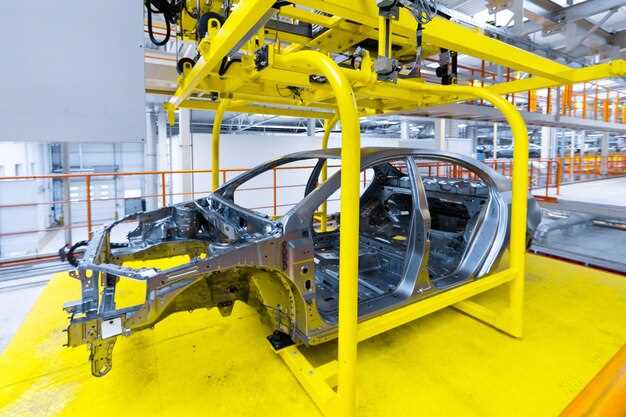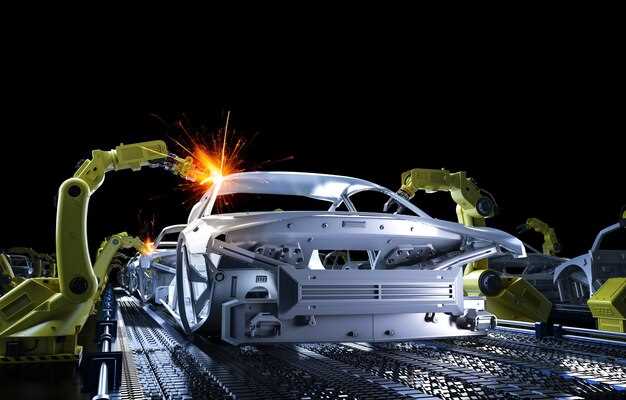
Recommendation: implement a phased transition to zero-emission steel through steelzero across volvo’s top five plant sites within 18 months, backed by multi-year contracts and explicit decarbonizing milestones to stabilize price. This approach will help supply remain resilient.
In the last years, industry leaders have shown that early adoption through industry-wide standards lowers risk; through steelzero, volvo will align procurement and operations to decarbonizing steel supply, however upfront retrofit costs will be concentrated in the first year. To remain competitive, the companys procurement team must negotiate price floors, volume rebates, and risk-sharing terms with partner mills, enabling most of the plant changes to break even as volumes grow in the market, which will demand tight cost forecasting.
These practical steps create a clear template for cross-industry adoption, emphasizing accountability and measurable outcomes.
Leaders should implement a concrete action plan: map the current steel mix, identify high-emission line items, then implement the switch through steelzero with clear ownership across procurement, production, and logistics. These steps will help decarbonizing goals and deliver industry-wide change, with measurable KPIs and public reporting. Price and cost trajectories will be influenced by supplier competition and carbon markets, so renegotiate terms to keep costs predictable for the next years and avoid sudden price swings. Through collaboration, teams can make the transition smoother for every plant and supplier.
To maximize impact, volume-based contracts should be paired with process improvements that reduce energy intensity, enabling most of the cost reduction to accrue after the first year. This approach will ensure cost predictability and supply security as the market shifts toward green steel, and more companies adopt similar policies. The result will be stronger leadership in decarbonizing operations and a scalable template for other brands in the market.
What the green steel initiative means for the automaker’s production plan
Reported shifts in material sourcing will drive changes across the production line. Announced targets indicate a steady integration of lower-emission steel into critical modules, with a tonne-scale tranche in the initial year and increasing in the following years. The changes will continue while safeguarding output.
Procurement teams will renegotiate supplier terms to require verified emission reductions. This will have impacts on capex and cycle times, as lines are reconfigured to accommodate new steelmaking methods and related processing steps on the shop floor.
Operationally, decarbonizing steel will push for greater collaboration with mills, affecting price dynamics and supply reliability. Elsewhere, peers are pursuing similar steps, which drives industry-wide gains in sustainability and sets a benchmark for on-time delivery and compliance reporting.
| Aspect | Impact | Métrique |
|---|---|---|
| Material sourcing | Shift to lower-emission mills | tonne/year |
| Production planning | Line changes to accommodate new batches | units/month |
| Pricing and cost | Potential premium versus legacy steel | percentage |
| Collaboration | Expanded verification and decarbonization programs | contracts |
Recommendations: lock long-term supply agreements with verified data, run pilots on a single platform or model family before scaling, and deploy digital twins to optimize change management. Track progress by tonne milestones and adjust plans to minimize disruption, which helps reduce price volatility and drive sustainability benefits over time.
When fossil-free steel will appear in Volvo models
The Swedish brand signals pilots of a climate-neutral alloy in lighter components by the latter half of the decade, with broader use across exterior panels and chassis parts as supplier networks scale in sweden et elsewhere. The pace depends on cost reductions, processing capacity, and access to renewable energy in operations. Parts made to tight tolerances will enter early testing in select markets, while the broader rollout remains ambitious yet contingent on learning from first deployments. This approach aims to cut emissions across the lifecycle without compromising safety or performance.
Across the value chain, leaders are coordinating standards for a electric metal flow–from design to production to testing–so components meet repeatable quality. In sweden and other regions, initial applications are likely in high-volume parts where unit costs are manageable. The plan will require soutien for suppliers, infrastructure upgrades, and market communication that meets customer expectations. However progress will hinge on policy clarity and the pace of research into energy-efficient processes that are more environmentally friendly. There is a need for consistent policy incentives to accelerate capital deployment across sweden and beyond.
Vers develop a robust ecosystem, the industry must expand in-house metal preparation and surface-treatment capacity, while buyers demand open data on energy sourcing and lifecycle impacts. The transition needs coordinated initiatives that reduce emissions in environment and logistics chains, increase awareness, and ensure materials are produced in an environmentally sustainable way. The goal is to meet demand for high-performance components while the project remains ambitious and economically viable. Cost improvement–down to one cent per unit through scale and recycling–will be a critical factor for pace.
For customers, the change will be gradual; the environment benefits grow as awareness rises and driving behavior remains durable without compromising safety. The Swedish brand will publish data and offer transparent reporting on material origins and energy use, reinforcing its climate leadership in other markets as adoption expands. That path requires initiatives that use recycled feedstock, closer operations with suppliers, and ongoing development of process efficiency. The aim is to keep the offering electric-ready and economically competitive while remaining climate-neutral.
источник: industry briefings indicate a rollout window aligned with broader industry standards and supplier readiness.
Cost implications for Volvo, suppliers, and buyers
Adopt a phased fossil-free steel strategy through certified suppliers to minimize disruption, lock in longer-term costs, and accelerate achieving ambitious emissions targets; start with flagship platforms to demonstrate success and build data for scaling. Fully align with responsiblesteel standards to ensure traceability and regulatory compliance.
Manufacturer-facing cost dynamics

The approach introduces a short-term premium, but benefits accrue across several cycles as technologies mature. The following cost drivers shape the path:
- Capex for process and plant upgrades to enable fossil-free inputs and certification across core lines; reported to vary by site, with initial deployments often requiring tens of millions, but costs decline as scale improves.
- Opex shifts: energy intensity, feedstock prices, and logistics costs; however, energy and material efficiency can reduce per-unit costs over time and across operations.
- Certification and audits: must allocate resources for supplier qualification, process validation, and regulatory reporting; through rigorous programs, the cost base becomes predictable across the project lifecycle.
- Regulatory environment: regulations may increase upfront capital needs but also unlock incentives; regulatory clarity helps plan investments and supports the transition through governance milestones.
- Technology integration: adoption of new steelmaking technologies and data systems; several pilots report gains in efficiency and emissions reductions via digital tooling; last-mile deployment may require additional infrastructure, impacting initial cash flows but lowering risk across the value chain.
- Responsiblesteel alignment across the value chain reduces compliance risk and supports traceability, reinforcing long-term benefits for environmental performance and stakeholder trust.
Supplier and buyer implications
- Supplier investments in cleaner production, energy management, and traceability systems; costs can be spread across multiple customers and secured with longer-term contracts, reducing price volatility across the network.
- Pricing pressure: early fossil-free inputs carry a premium; several markets show cost reductions as scale improves, but a transitional period remains challenging for buyers and suppliers alike.
- Contract strategy: milestone-based pricing and certification requirements must align with regulatory timelines; adoption across several facilities is essential to realize full benefits.
- Logistics and inventory: last-mile logistics, packaging, and regional routing require new arrangements; environment benefits improve with optimized transport and modal shifts.
- Sweden-specific considerations: supportive policy, green energy pricing, and a skilled workforce reduce barriers and accelerate the transition, delivering more predictable costs and faster regulatory compliance.
Quality, safety, and performance expectations with fossil-free steel
Quality across the supply chain relies on consistent chemical composition, predictable microstructure, and stable mechanical properties for fossil-free steel. To meet safety mandates, implement traceability from raw materials to final products, supported by a certification program and auditable process controls. Industry partners have already deployed shared specs and quality gates, with announced milestones spanning alloying, heat treatment, and finished components. To reduce footprint, optimize energy use in processing, adopt low-emission reducing technologies, and tighten surface-finish tolerances to improve corrosion and wear resistance. Establish a cross-functional quality council to drive standardization, data-sharing, and continuous improvement.источник daqing
Safety and performance expectations are anchored in tests that mirror real driving loads. Validate tensile strength, yield, elongation, impact toughness, and fatigue life for key structures and joints relevant to the platform. Require standardized protocols and a corresponding certification for critical components. For weldability and forming, specify compatible heat treatment and joining methods to preserve properties after service in diverse climates. Use digital twins and sensor data to anticipate behavior under vibration, temperature swings, and moisture exposure, supporting reliability and field trust.
Technology roadmap and market readiness hinge on alignment with the steelzero ecosystem, milestones for decarbonizing emissions, and implementation of supplier certification plans across the footprint. Employ a common data model to track chemistry, microstructure, and performance, increasing transparency across the value chain. Communicate to customers that sustainability ambition is backed by rigorous testing, certification, and traceability. Leverage источник and daqing-origin sources to ensure supply stability, with increased awareness across markets as capacity scales. Driving decarbonization while meeting market expectations will require ongoing cooperation, disciplined data governance, and targeted process improvements across the last mile of production and joining.
Steps for other automakers to engage in the emission-free steel initiative
Establish an industry-wide commitment with a published timetable to source greener steel for cars. Require mill-to-vehicle supply-chain transparency and implement a scoring framework to assess footprint and responsible steel practices, with explicit accountability for suppliers. Through regulations, clearer expectations, and public ambitions, shift purchasing toward lower-emission options rather than remaining dependent on traditional steelmaking.
Kick off several pilots with steelmakers to test lower-emission processes in steelmaking and to validate reductions in energy intensity and emissions. Use results from these projects to refine specifications and decide on broader implementation across models. In sweden, volvo and peers can coordinate on supplier agreements to reduce risk and ensure steady supply, while elsewhere industry players learn from comparable programs, however, pricing signals remain a key gating factor for adoption.
Implementation framework and metrics
Set KPIs aligned with regulations and industry norms: share of total steel procurement that is responsibly sourced, year-over-year footprint reductions, and supplier performance on emissions reporting. Under a 3–5 year horizon, require ramp-up from pilots to full-scale purchasing plans, with quarterly reviews and public disclosures to keep the action transparent.
Offer support mechanisms to offset price differentials for greener steel, including longer-term contracts, risk-sharing tools, and public-private funding. Elsewhere, industry-wide collaboration has shown that multi-stakeholder projects can lower costs and increase access to responsible steel, last but not least by leveraging smoother procurement and smarter logistics to reduce transport footprint.

